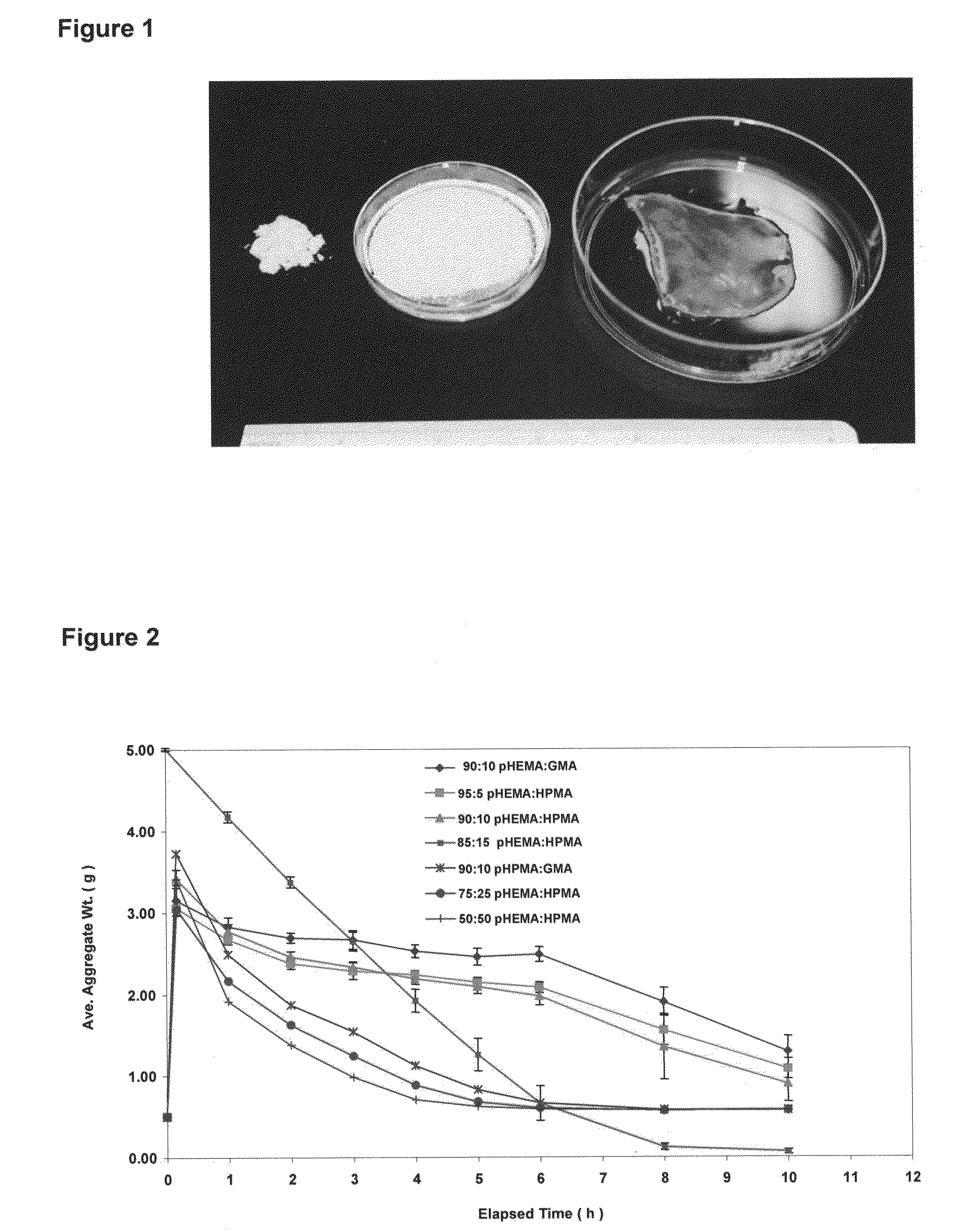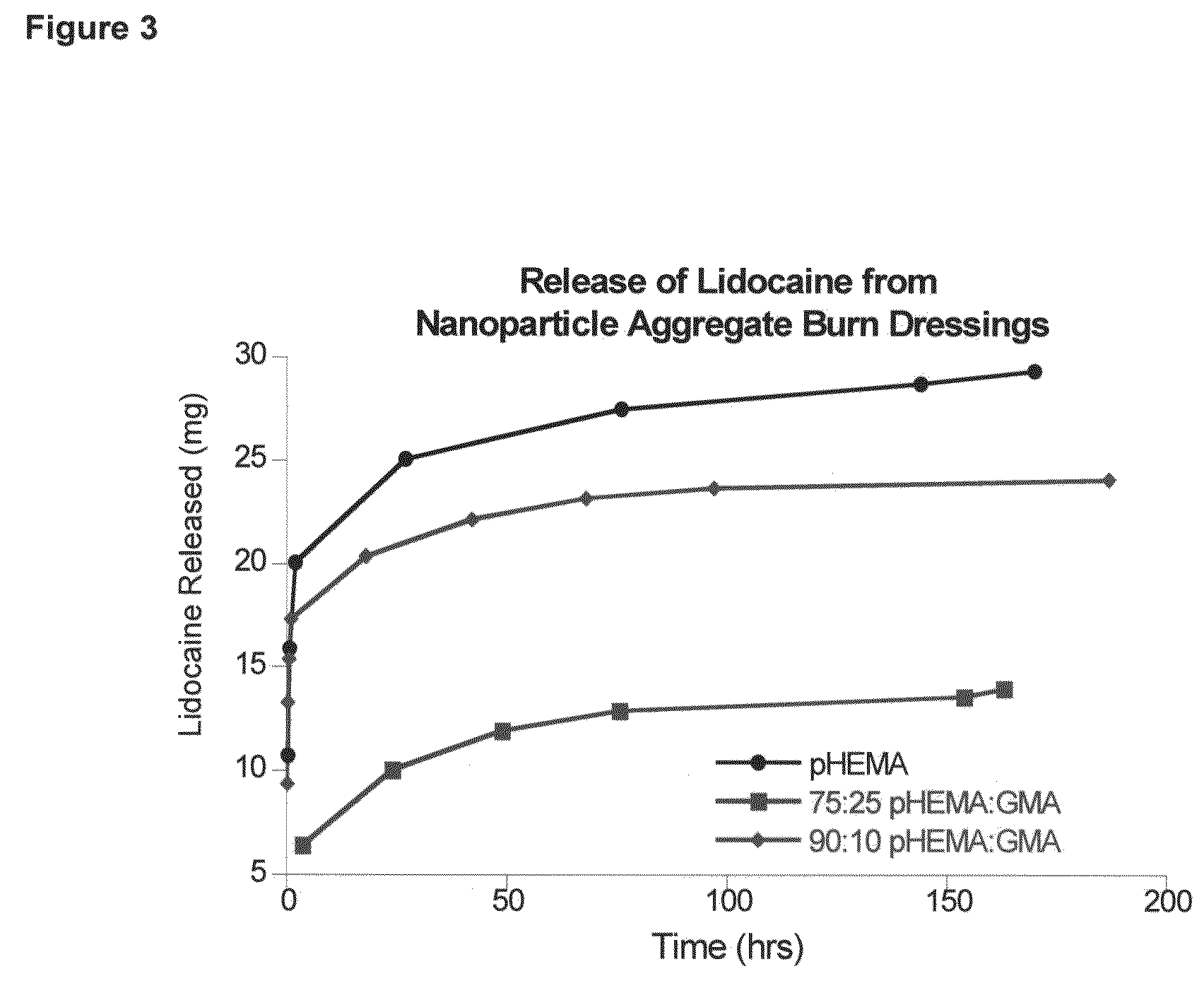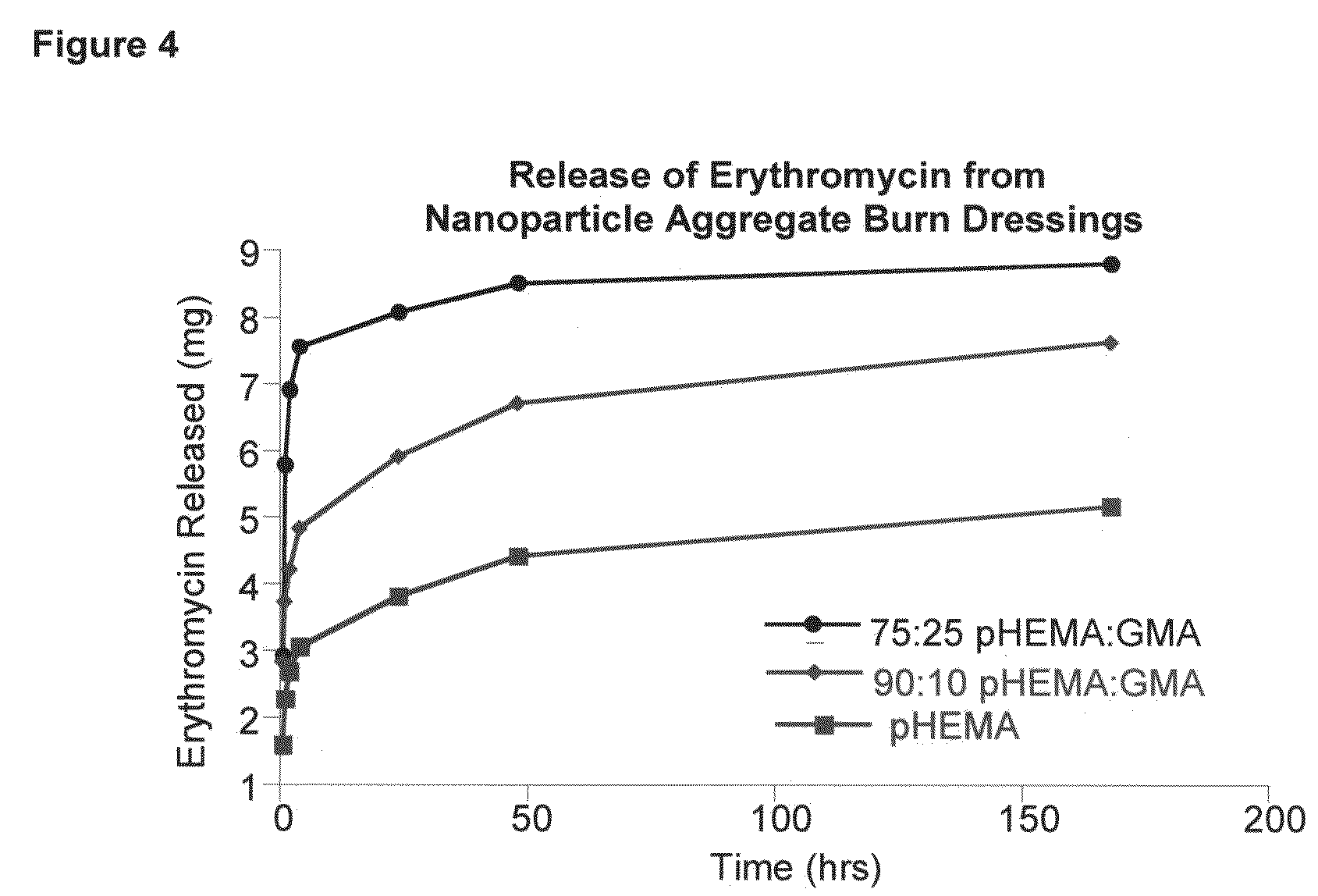Hydrogel wound dressing and biomaterials formed in situ and their uses
a biomaterial and hydrogel technology, applied in the field of hydrogel wound dressing and biomaterials formed in situ, can solve the problems of gauze bandages, shedding lint into the wound, and tearing away new skin in the removal process, so as to eliminate the potential for infection and relieve pain
- Summary
- Abstract
- Description
- Claims
- Application Information
AI Technical Summary
Benefits of technology
Problems solved by technology
Method used
Image
Examples
embodiments
[0082]This invention provides a dry powder of polymeric nanoparticles; methods of forming a shape-conforming, shape-retentive aggregate dressing in situ on a wet wound site; methods of forming a shape-conforming, shape-retentive aggregate biomaterial in vivo in or on a wet bodily tissue and uses of the dry powder in the treatment of wounds. These and further embodiments are discussed below in details.
[0083]In an embodiment, this invention provides a dry powder of polymeric nanoparticles prepared by polymerizing an effective amount of a monomer or two or more monomers, at least one of which is a 2-alkenoic acid, a hydroxy (2C-4C) alkyl 2-alkenoate, a dihydroxy (2C-4C) alkyl 2-alkenoate, a hydroxy (2C-4C) alkoxy (2C-4C) alkyl 2-alkenoate, a (1C-4C) alkoxy (2C-4C) alkoxy (2C-4C) alkyl 2-alkenoate or a vicinyl epoxy (1C-4C) alkyl 2-alkenoate, in a polar liquid or a mixture of two or more miscible liquids, at least one of which is polar, and an effective amount of a surfactant to produce...
example 1
Hydrogel Nanoparticle Synthesis Using HEMA
[0134]A 500 mL media bottle equipped with a stir bar was charged with 4.52 g (34.8 mmol) hydroxyethyl methacrylate(HEMA) monomer, 77.74 mg (0.428 mmol) ethylene glycol dimethacrylate (EGDM), 0.2123 g (0.634 mmol) sodium dodecyl sulfate (SDS) and 240 mL milli-Q H2O. The bottle was closed with a sparging cap and purged with N2 for 1 hr at room temperature while stirring. Then, 0.166 g potassium persulfate (K2S2O8) was dissolved into 21 mL of milli-Q H2O and added to the media bottle while stirring. The bottle was transferred to a 40° C. water bath and held there for 12 hours. The resulting suspension of hydrogel particles had an opalescent blue color. The particles were analyzed by dynamic light scattering and found to have an average radius of 36.5 nm as shown in FIG. 1. The particles were purified by tangential flow filtration and are stored in an aqueous suspension. No flocculation was observed over several months.
example 2
Hydrogel Nanoparticle Synthesis Using HPMA
[0135]A 150 mL media bottle equipped with a stir bar was charged with 2.532 g (17.5 mmol) of hydroxypropyl methacrylate (HPMA) monomer, 52.73 mg (0.266 mmol) of ethylene glycol dimethacrylate(EGDM) crosslinker, 107.6 mg (0.3730 mmol) sodium-dodecylsulfate (SDS), and 118 mL of nitrogen degassed Milli-Q H2O. The bottle was closed and stirred to form a clear solution. In a separate vial, 83 mg of K2S2O8 was dissolved into 2 mL of Milli-Q H2O and added to the media bottle while stirring. The media bottle with clear solution was transferred into a 40° C. water bath and held at constant temperature for 12 hours. The resulting suspension of hydrogel nanoparticles had an opalescent blue color. The particles were analyzed by laser light scattering and found to have an average particle size of 21.3 nm and a size range from 14 nm to 41 nm. The suspension had approximately 1% solid polymer by mass. To date, the suspension of hydrogel nanoparticles resis...
PUM
| Property | Measurement | Unit |
|---|---|---|
| diameter | aaaaa | aaaaa |
| weight percent | aaaaa | aaaaa |
| diameter | aaaaa | aaaaa |
Abstract
Description
Claims
Application Information
 Login to View More
Login to View More - R&D
- Intellectual Property
- Life Sciences
- Materials
- Tech Scout
- Unparalleled Data Quality
- Higher Quality Content
- 60% Fewer Hallucinations
Browse by: Latest US Patents, China's latest patents, Technical Efficacy Thesaurus, Application Domain, Technology Topic, Popular Technical Reports.
© 2025 PatSnap. All rights reserved.Legal|Privacy policy|Modern Slavery Act Transparency Statement|Sitemap|About US| Contact US: help@patsnap.com



